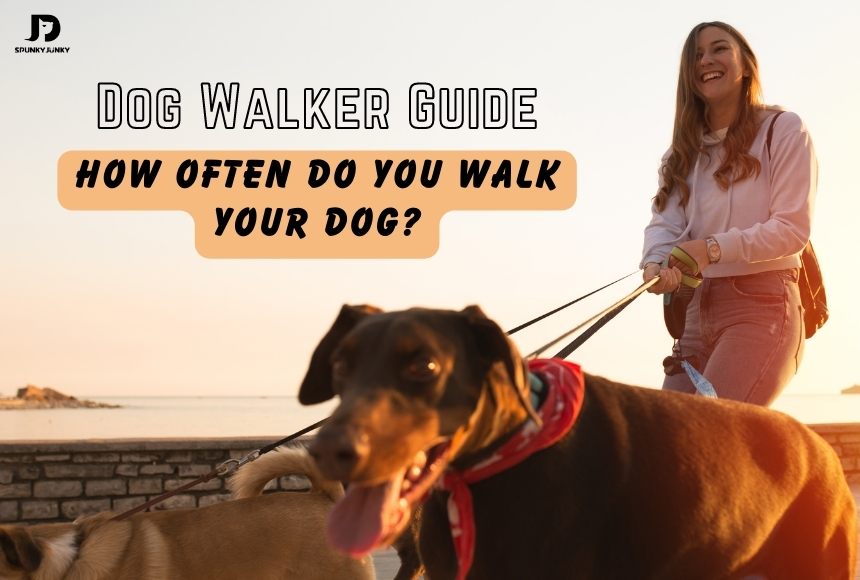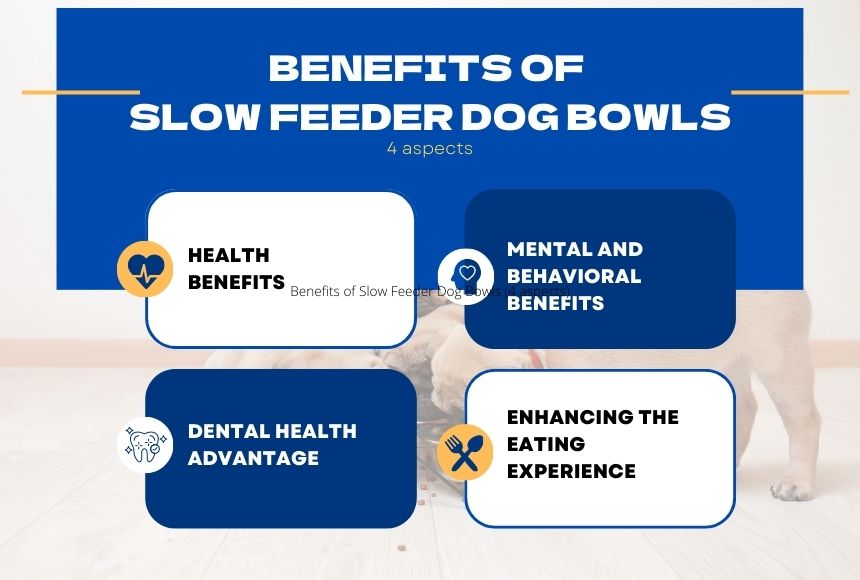Hi newbies! In the previous installments of the novice series, we have answered the "Dog's dietary taboos and preferences" for you.
Today let's change the direction and talk about a problem pet owners must face: walking the dog.
As a new dog owner, do you know how important it is to walk your dog? Do you have a lot of confusion about how often do you walk your dog?
Don't worry! In this article, we'll take you into the wonderful world of dog walking. Learn about the benefits of dog walking and how to properly and scientifically customize exclusive dog walking time.
Let's start with the most important question: How often do you walk your dog?
How Often Do You Walk Your Dog?
Dogs are active animals. They need regular amounts of exercise on a daily basis.
A study conducted at Michigan State University found that 41% of dog owners out of 5,902 respondents walked their dogs for 10 minutes at a time. However, only 27% of owners walk their dogs for at least 150 minutes a week. The difference is huge.
So, how often do you walk your dog?
The answer: Most adult dogs need between 30 minutes and two hours of exercise daily, and puppies and healthy senior dogs also need at least 30 minutes daily.
If your dog is brachycephalic or has a medical condition. It's best to consult a veterinarian to develop a specific exercise program for your dog.
5 Factors That Influence How Often Do You Walk Your Dog

You already know the approximate length of your dog's walk. However, many specific factors affect the length of dog walking, which can be summarized into the following four types:
1. Age
If you have puppies, don't neglect their exercise routine. Exercise helps create a positive emotional cycle and boosts immunity. But avoid repetitive movements and high-intensity activities until your bones are fully developed. Extremely vigorous exercise as a puppy can cause elbow and hip dysplasia in dogs.
It is also important for older dogs to pay attention to their cues. Because later in life, they no longer have the energy they had before. But it may neglect its ability to please its owner. Older dogs typically require shorter, more frequent walks. For example, walk 3 times a day for 10-20 minutes.
2. Dog breed
Different breeds of dogs have different exercise needs.
When it comes to high-intensity walks, some dog breeds are built for speed and stamina. For example:
● Border Collie: Known for their incredible intelligence and energy, the Border Collie excels at high-intensity activities.
● Australian Shepherd: Similar to the Border Collie, the Australian Shepherd is active and loves physical exercise.
● Siberian Husky: The Husky was bred for pulling sleds over long distances, with impressive stamina and a love of the outdoors.
Conversely, some dog breeds prefer shorter walks or have lower exercise needs. These breeds may still enjoy regular walks but don't need as much intensity.
For example:
● Bulldog: The short nose of the bulldog is not suited for long, strenuous walks, which can make breathing more difficult.
● King Charles Spaniel: They are content with moderate exercise. They love exploring the outdoors but don't require high-intensity activity.
● Pug: Like the pit bull, the pug's short snout makes high-intensity exercise difficult. They are better suited for short walks and indoor games.
3. Size
Body size can affect the length and intensity of your walks.
Do you think smaller dogs need shorter walks?
But this is a misconception. Small dogs can often take as long walks as larger dogs. Just be aware that the distances are different, as one step for a large dog is equivalent to 3 steps for a small dog.
4. Health status
Several health issues can make it difficult for a dog to walk longer walks or walk fast. Some common factors include:
● Laryngeal paralysis or laryngeal disease (causing the dog's airway to narrow)
● Fever
● Brachycephalic syndrome (a flat face in breeds such as bulldogs, French bulldogs, and boxers)
5. Environmental conditions
The outdoor environment can affect your dog's walk time. Extremely hot weather conditions can cause heatstroke in dogs, while extremely cold weather conditions can cause hypothermia and frostbite.
During extreme weather, you have more indoor exercise options to keep your dog active.
In addition, changes in the environment can also affect the length of the walk. Some dogs love new sights and smell if you change course occasionally. This helps the dog become more excited. Other dogs get stressed by the new environment and have a bad mood.
5 Reasons Why Need Walking Dog Daily
Based on the previous section, you should already have a walking plan tailored for your dog. Not only is walking your dog fun, but it's also great for them!
What are the specific benefits? Let's take a look!
1. Exercise and keep fit: Walking helps your dog burn energy and stay in shape. Prevent diseases caused by excessive obesity.
2. Explore the world: Dogs love to sniff and explore their surroundings. When you take them for walks, they discover new places, smell interesting smells and see exciting things. It's like going on an adventure together!
3. Have a good time: Walking your dog is a special time to bond and have fun together. You can talk to your dogs, pet them, and show them much love. This is when you can make them feel truly happy and loved.
4. Meet new people: On your walks, you may meet other dogs and friendly people. This is your dog's chance to make new friends and socialize. They can wag their tails and have a great time with their new friends!
5. Learn good manners: Walking your dog is a great opportunity to teach them how to behave. You can teach them to walk properly on the leash, not pull, and follow your commands.
So grab your dog's leash, put on your walking shoes, and prepare for heart-pounding adventures together!
Morning or Evening Walking Dog: Which is Better?
Are you wondering when is the best time to walk your dog?
Let's see if the dog prefers a morning or evening walk!

Morning walking dog:
Did you know that some dogs are early birds, just like you? Here are some reasons why a morning walk can be good for your dog:
1. Start the Day: Just like how we feel energized in the morning, a morning walk can wake your dog, wag its tail, and get its brains going!
2. Cool and Calm: Mornings are usually cooler, so your dog won't be too hot on a walk. They can enjoy the breeze and explore without getting tired or out of breath.
3. Peaceful and Quiet: The world still wakes up in the morning, so fewer people and cars are around. Your dog can enjoy a quiet walk without too many distractions.
Evening walking dog:
If your dog is a night owl, they may enjoy evening walks. Here are some reasons why evening walks are perfect for them:
1. Release energy: Dogs use a lot of energy after a long day of napping and playing. An evening walk can help them release all their excitement and prepare them for a cozy evening at home.
2. Cool evenings: As the sun sets and the weather turns cooler, they can enjoy a comfortable walk without getting too hot or tired.
3. Meet and Greet: In the evening, many other dogs and their owners also go out for walks. It's a great time for your dog to make new friends!
So, which is better, a morning walk or an evening walk? It depends on your dog's preferences and your family's schedule.
Unleash vs. Leash Walking Dog: Which is Better?
Have you ever wondered whether it is better to walk your dogs on a leash or to let them run free? Both have their pros and cons.
It protects your dog from dangerous situations when walking on a leash.
Beyond that, walking your dog on a leash is a great opportunity to train your dog. You can teach them important commands like "sit" and "stay."
But sometimes, it's a good thing to walk your dog off-leash, but only in special places where it's allowed.
First, when they are released into designated areas like dog parks, they can have fun and adventure while remaining safe.
Second, free walks allow your dog to play with other dogs up close.
Plus, free walking allows them to run, stretch their legs, and expend energy, which helps them release stress.
In conclusion, whether your dog is on a leash, always be aware of their safety and the rules in your area. Make sure they follow your orders and stay close to you.
FAQ About Dog Walking
1. How many walks a day should a dog have?
Most dogs will benefit from 1-2 daily walks, but the number of walks may vary depending on the dog's age, breed, and energy level. Finding an exercise intensity that is right for your dog is important.
2. What happens if you don’t walk your dog?
If you don't walk your dog regularly, they may experience various negative effects. These can include pent-up energy leading to destructive behavior, weight gain and obesity, behavioral issues, boredom, and a decline in overall physical and mental health. Regular walks are essential for a dog's well-being and help fulfill their exercise, social, and mental stimulation needs.
3. What temperature is safe for dogs to walk?
The safe temperature for dogs to walk depends on several factors, including the breed of the dog, the level of physical activity, and the humidity level.
For most dogs, temperatures up to 85°F (29.5°C) are generally considered safe for outdoor walks, especially if the humidity is not too high. However, for safety reasons, we recommend walking in the cooler mornings and evenings, e.g. earlier than 8:00 or later than 21:00.
And please notice that some breeds, such as brachycephalic (short-nosed) dogs like Bulldogs and Pugs, are more susceptible to heat-related issues.
4. What are signs of heat exhaustion in dogs?
Dogs show signs of overheating by panting too much, drooling, becoming weak, throwing up, and falling. If you see any of these signs while walking your dog, you should take it to a cooler, shadier place right away, give it water, and, if necessary, call a vet.
Final Thoughts
Remember, every dog is unique, and finding the right walk time for your dog is crucial. How often do you walk your dog? Whether it's an hour or two, light in the morning or evening, the key is to prioritize time for regular exercise, mental stimulation, and bonding with your dog.
So let's embrace the fun of dog walking and raise a happy, healthy dog together.
If you have other questions or confusion about raising a dog or how often you walk your dog, please message us, and we will answer you in detail.






